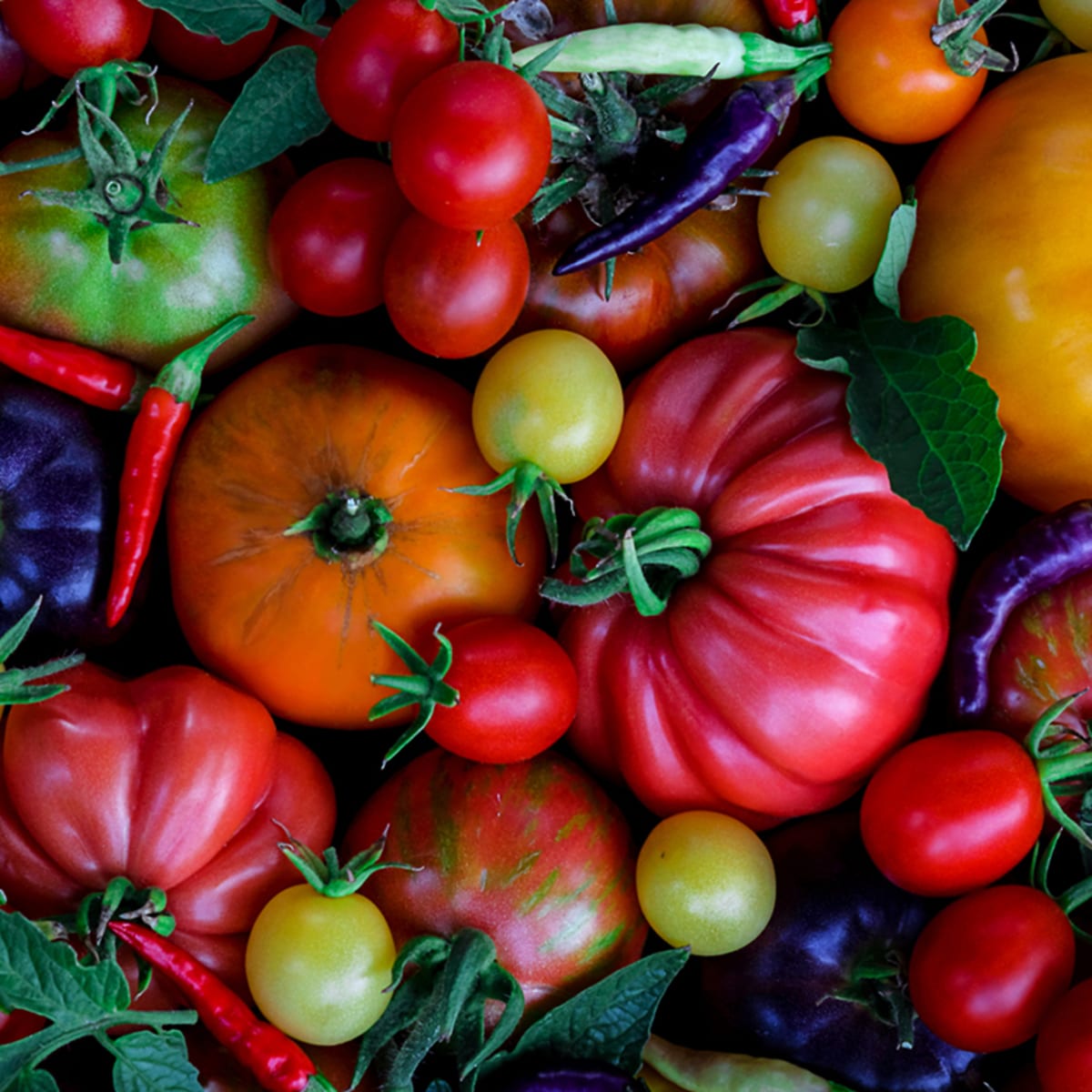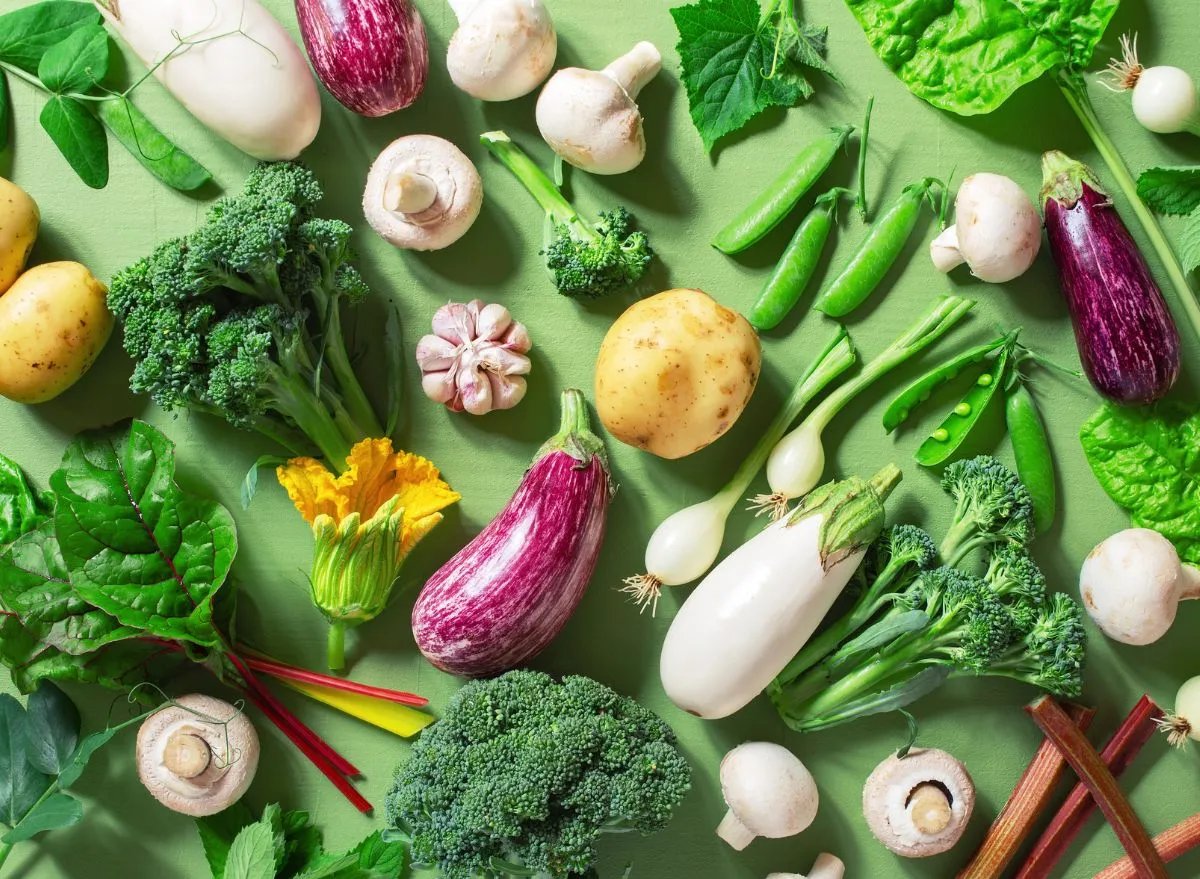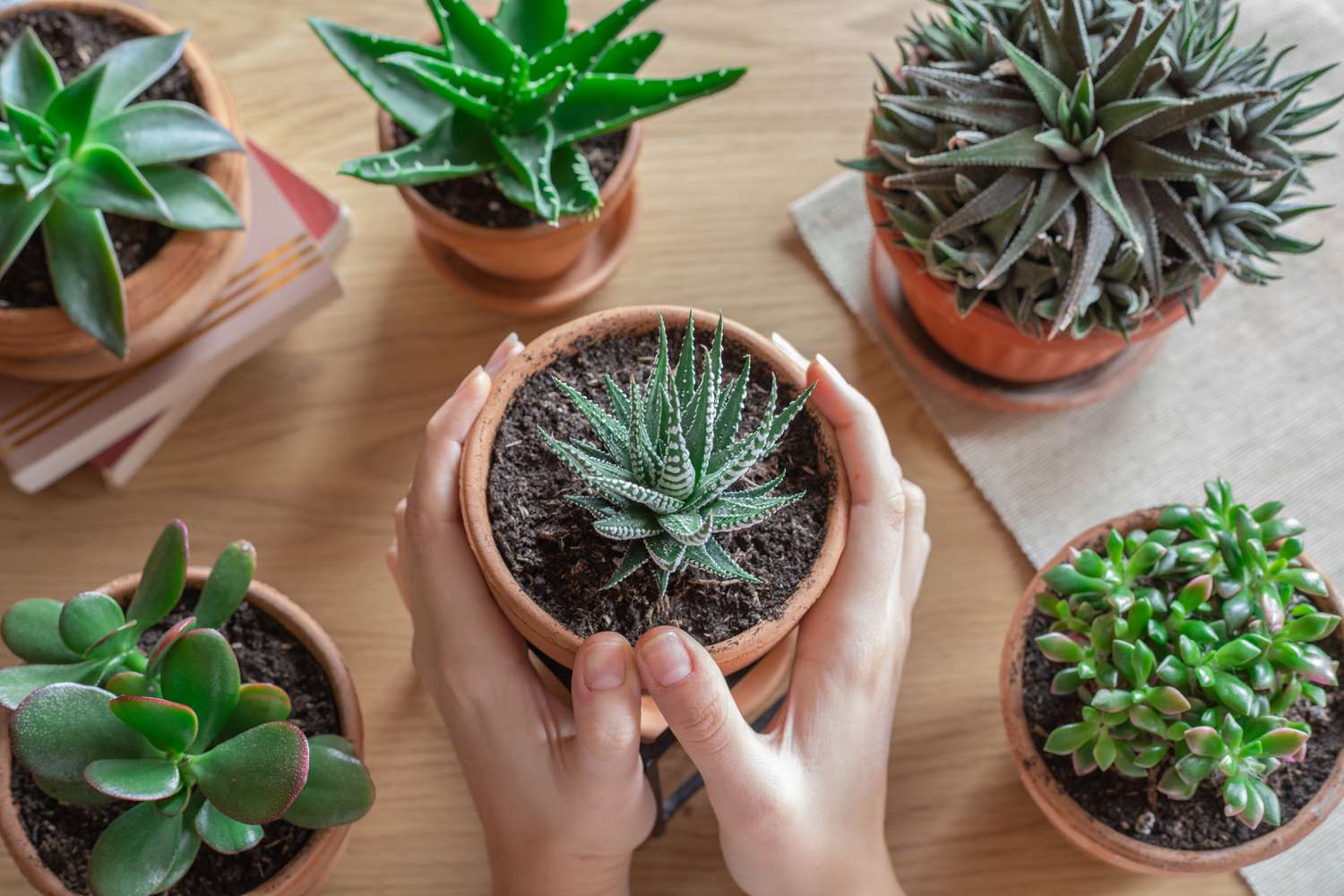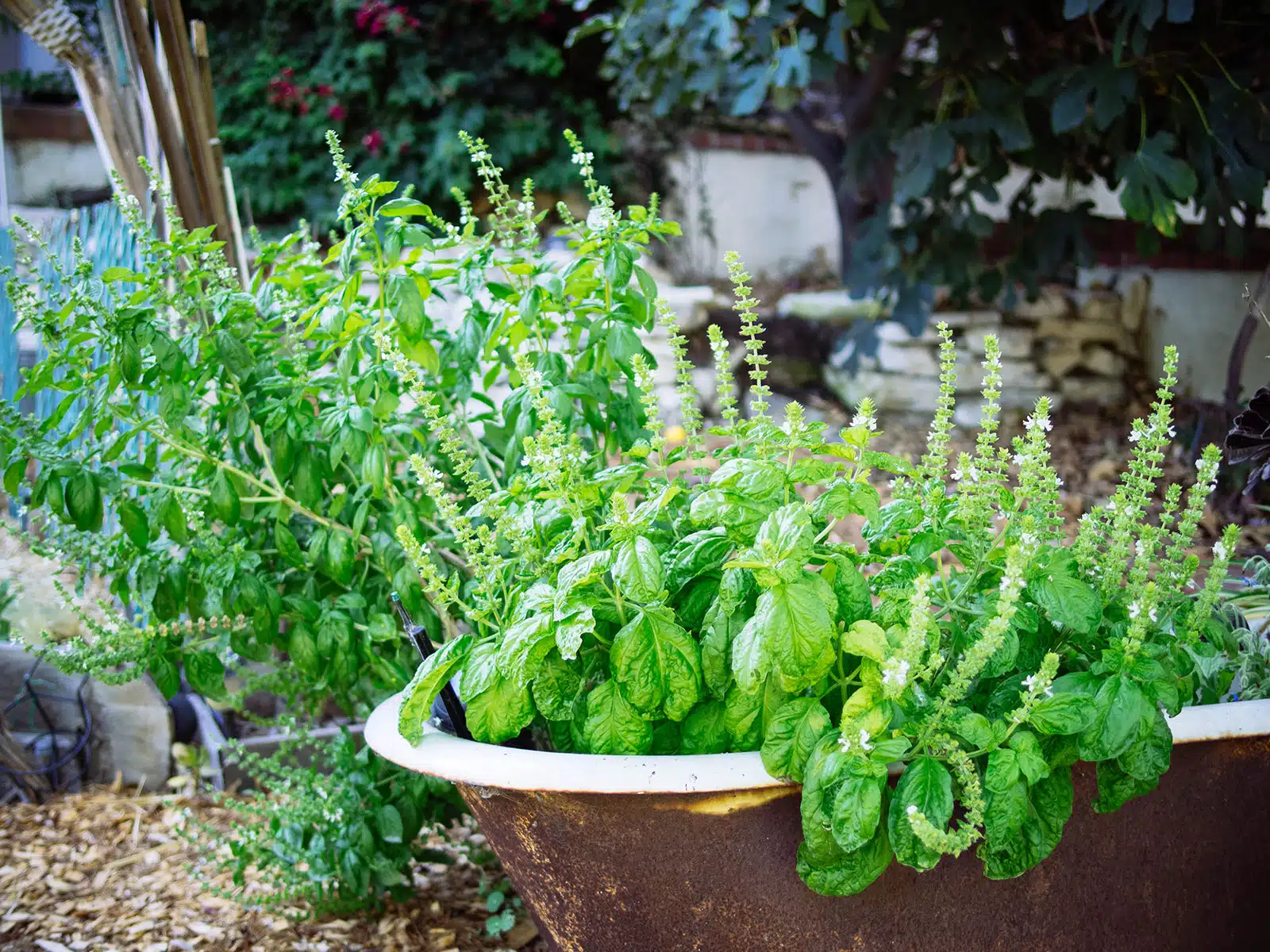Home>Types of Gardening>Edible Gardening>Which Vegetables Are Nightshades


Edible Gardening
Which Vegetables Are Nightshades
Modified: January 22, 2024
Discover which vegetables fall under the nightshade family and learn how to grow them in your own edible gardening space.
(Many of the links in this article redirect to a specific reviewed product. Your purchase of these products through affiliate links helps to generate commission for Chicagolandgardening.com, at no extra cost. Learn more)
Table of Contents
Introduction
Welcome to the world of edible gardening, where you can grow your own fresh and nutritious vegetables right in your backyard or even in small pots on your balcony. Edible gardening not only allows you to have a sustainable and organic source of food, but it also provides immense satisfaction and joy as you watch your plants thrive and produce an abundance of delicious harvests.
One popular category of vegetables that many gardening enthusiasts enjoy growing is nightshade vegetables. These vegetables belong to the Solanaceae family and are known for their vibrant colors, versatility in the kitchen, and unique flavors. However, there are some misconceptions and concerns surrounding nightshades, leading many people to wonder if they are suitable for consumption.
In this article, we will explore the world of nightshade vegetables, highlighting their common varieties and discussing their potential impact on health. Whether you are a seasoned gardener looking to expand your edible garden or a curious individual interested in learning more about nightshades, this article will provide you with valuable insights and knowledge.
So, put on your gardening gloves, grab your spade, and let’s dive into the fascinating world of nightshade vegetables!
What are nightshades?
Nightshade vegetables are a group of plants that belong to the Solanaceae family, which includes various flowering plants. These vegetables derive their name from the fact that some of these plants flower and produce their fruits at night. Nightshades are characterized by specific botanical features, and they share certain characteristics that set them apart from other vegetables.
The most common nightshade vegetables include potatoes, tomatoes, peppers, and eggplant. These vegetables are widely consumed and cherished for their unique flavors and culinary versatility. However, it’s important to note that not all nightshades are edible or safe for consumption. Plants such as jimsonweed and deadly nightshade are highly toxic and should never be consumed.
One of the defining characteristics of nightshade vegetables is the presence of alkaloids. Alkaloids are natural compounds found in various plants, and they can have both positive and negative effects on the human body. In the case of nightshades, certain alkaloids, such as solanine and capsaicin, are present in varying amounts, depending on the specific vegetable.
Solanine, which is primarily found in potatoes, is a toxin that helps protect the plant from pests and diseases. In small amounts, solanine is harmless to humans, but consuming large quantities of green or sprouted potatoes can lead to solanine poisoning, resulting in symptoms such as nausea, vomiting, and abdominal pain.
Capsaicin, on the other hand, is the compound responsible for the hot and spicy flavor in chili peppers. It has been studied for its potential health benefits, including pain relief and improved metabolism. However, some individuals may be sensitive to capsaicin and experience gastrointestinal discomfort when consuming spicy peppers.
While alkaloids may raise concerns, it’s important to remember that the overall health impact of nightshade vegetables largely depends on individual tolerance and moderation in consumption. Many people enjoy nightshade vegetables as part of a balanced diet without experiencing any adverse effects.
In the next sections, we will delve deeper into some of the most popular nightshade vegetables, exploring their unique characteristics, culinary uses, and potential health benefits. Let’s continue our journey into the world of nightshades!
Common nightshade vegetables
Nightshade vegetables encompass a variety of delicious and versatile options that can be incorporated into a wide range of culinary dishes. Let’s explore some of the most commonly consumed nightshade vegetables:
- Potatoes: Potatoes are one of the most popular and widely consumed vegetables worldwide. They come in various varieties, including russet, red, and Yukon gold. Potatoes can be enjoyed mashed, roasted, baked, or fried, making them a versatile ingredient in both savory and sweet recipes. However, it is important to note that green or sprouted potatoes should be avoided due to their potential solanine content.
- Tomatoes: Tomatoes are known for their vibrant red color and rich, tangy flavor. They are incredibly versatile and can be used in salads, soups, sauces, and even as a topping on pizzas. Tomatoes are also packed with essential nutrients, including vitamins A and C, and they are a great source of lycopene, an antioxidant that has been linked to heart health and cancer prevention.
- Peppers: Peppers come in various shapes, sizes, and levels of spiciness. From sweet bell peppers to fiery hot chili peppers, there is a pepper for every taste preference. Peppers are packed with vitamins and minerals and add a burst of flavor to dishes. They can be roasted, stuffed, sautéed, or enjoyed raw in salads or as a crunchy snack.
- Eggplant: Eggplant is a unique nightshade vegetable with its deep purple skin and rich, creamy flesh. It is often used as a meat substitute in vegetarian dishes due to its hearty texture. Eggplant can be grilled, roasted, or sautéed, and it absorbs flavors well, making it a popular choice in Mediterranean and Asian cuisines.
These common nightshade vegetables offer a wide range of flavors and culinary possibilities. They are nutritious, flavorful, and can add depth to your meals. However, it’s important to ensure that you don’t have any allergies or sensitivities to these vegetables.
Now that we have explored the common nightshade vegetables, let’s move on to discover some other lesser-known but equally exciting members of the nightshade family in the next section.
Potatoes
Potatoes are a staple in many diets around the world and are a beloved member of the nightshade family. These versatile tubers come in various shapes, sizes, and colors, offering a wide range of culinary possibilities. From fluffy mashed potatoes to crispy fries, potatoes have a place on every plate.
One of the most popular types of potatoes is the russet variety. Russet potatoes have a high-starch content, making them perfect for baking and mashing. Their fluffy texture and buttery flavor make for a delicious side dish or the star of a comforting meal.
Red potatoes, on the other hand, have a firmer texture and a slightly sweet taste. They hold their shape well when boiled or roasted, making them ideal for salads or roasted vegetable medleys. Red potatoes are also rich in antioxidants and vitamin C, providing a nutritious boost to your meals.
Yukon gold potatoes offer a creamy texture and a buttery flavor. They are versatile, working well in soups, stews, and gratins. Their golden color adds vibrancy to any dish, making them visually appealing as well.
While potatoes are often associated with unhealthy preparations like deep-fried French fries, there are many healthier ways to enjoy this nutritious vegetable. Baking, boiling, or roasting potatoes with a moderate amount of healthy oils can help retain their nutrients while reducing added fats.
It’s important to note that the green parts of a potato, such as the skin or sprouts, should be avoided. Green potatoes contain solanine, a naturally occurring alkaloid that can be toxic when consumed in large amounts. To minimize the risk of solanine consumption, store potatoes in a cool, dark place to prevent them from turning green and remove any green or sprouted areas before cooking.
Potatoes are also a good source of vitamins and minerals, including vitamin C, potassium, and B vitamins. They provide an excellent source of energy and can be a valuable addition to a well-balanced diet. Additionally, potatoes are naturally gluten-free, making them a suitable option for individuals with gluten sensitivities or celiac disease.
Whether you enjoy them boiled, roasted, mashed, or baked, potatoes offer a world of possibilities in the kitchen. Their versatility, nutritional value, and comforting taste make them a beloved vegetable for many.
In the next sections, we will continue exploring other popular nightshade vegetables, each with its own unique characteristics and culinary uses.
Tomatoes
Tomatoes are a vibrant and versatile nightshade vegetable that adds a burst of flavor to countless dishes. Whether enjoyed fresh, cooked, or canned, tomatoes are a staple ingredient in many cuisines around the world. With their rich red color and tangy taste, they are a favorite among gardeners and food enthusiasts alike.
Tomatoes come in various shapes, sizes, and colors, ranging from small cherry tomatoes to large beefsteak tomatoes. Each variety offers its own unique flavor profile and culinary potential. The sweetness of cherry tomatoes pairs well with salads and appetizers, while the meatiness of beefsteak tomatoes makes them a great option for sandwiches and sauces.
One of the key nutritional benefits of tomatoes is their high content of lycopene, a powerful antioxidant that gives them their vibrant red color. Lycopene has been linked to various health benefits, including reduced risk of certain types of cancer and improved heart health. Tomatoes are also rich in vitamins A, C, and K, as well as potassium and folate, making them a nutritious addition to any diet.
In addition to their nutritional value, tomatoes are incredibly versatile in the kitchen. They can be enjoyed raw in salads, salsas, and bruschetta, or cooked in sauces, stews, and soups. Roasting tomatoes intensifies their flavor, making them a delicious addition to pasta dishes or served as a side dish. They can even be dried to create sun-dried tomatoes, adding a burst of umami to various dishes.
Due to their acidity, tomatoes are often a key ingredient in balancing the flavors of many savory dishes. They add a tangy and refreshing element to sauces, curries, and marinades. Additionally, tomato-based products such as tomato paste, canned tomatoes, and tomato sauce are pantry staples that provide a convenient and versatile foundation for many recipes.
Tomatoes are relatively easy to grow, making them a popular choice for home gardeners. Whether you have a spacious backyard or a small balcony, you can cultivate tomato plants in containers or garden beds with proper sunlight, soil, and care. Watching your tomatoes grow and ripen gives you a sense of satisfaction and adds a personal touch to your culinary creations.
So whether you’re enjoying a fresh Caprese salad, savoring a warm bowl of tomato soup, or indulging in a classic marinara sauce, tomatoes bring a burst of flavor and a touch of summer to your plate. Their versatility, nutritional benefits, and vibrant taste make them an essential component of any edible garden and kitchen.
In the next sections, we will continue our exploration of other popular nightshade vegetables, each offering its own unique characteristics and culinary delights.
Peppers
Peppers are a diverse and colorful group of nightshade vegetables that add a delightful kick of flavor to a wide range of dishes. From sweet to spicy, peppers come in various shapes, sizes, and levels of heat, making them a versatile ingredient in many cuisines around the world.
One of the most popular types of peppers is the bell pepper, known for its crunchy texture, vibrant colors, and mild, sweet taste. Bell peppers are available in green, red, yellow, and orange varieties, with each color offering a slightly different flavor profile. They are commonly used in salads, stir-fries, and stuffed pepper dishes, adding a refreshing and crunchy element to meals.
For those seeking a touch of heat, chili peppers are the way to go. From jalapeños to serranos, and from cayenne peppers to habaneros, chili peppers come in varying levels of spiciness. The compound responsible for their fiery kick is capsaicin, which not only adds heat but also has potential health benefits, including pain relief and increased metabolism.
Chili peppers can be used fresh, dried, or ground into a powder. They are essential ingredients in many spicy dishes, hot sauces, and marinades. Their vibrant colors and intense flavors create a lively dining experience for those who enjoy a little heat in their meals.
Another popular type of pepper is the poblano pepper, known for its mild to medium heat and rich and earthy flavor. Poblano peppers are often used in Mexican cuisine to make dishes such as chiles rellenos and flavorful sauces like mole. When roasted, peeled, and stuffed, they become a delicious and savory treat.
In addition to their taste, peppers are a great source of vitamins and antioxidants. They are rich in vitamin C, vitamin A, and dietary fiber. The vibrant colors of peppers indicate the presence of beneficial nutrients that contribute to overall health and well-being.
Peppers can be enjoyed in various ways. They can be roasted, grilled, sautéed, or eaten raw in salads and sandwiches. They can be stuffed, pickled, or puréed into flavorful sauces. Whatever your preference, peppers bring a burst of flavor, vibrant colors, and a touch of heat to your culinary creations.
Growing peppers can be a rewarding experience for home gardeners. With the right conditions of sunlight, well-drained soil, and regular watering, pepper plants can thrive and produce an abundant harvest. Whether you have a garden bed or a few pots on your balcony, growing peppers allows you to enjoy the satisfaction of growing your own fresh produce.
In the next sections, we will continue our exploration of other popular nightshade vegetables, each offering its own unique characteristics and culinary potential.
Eggplant
Eggplant, also known as aubergine, is a unique and versatile nightshade vegetable that adds a touch of richness and complexity to dishes. With its distinct purple skin and creamy flesh, eggplant is a popular ingredient in various cuisines, from Mediterranean to Asian.
One of the key attributes of eggplant is its ability to absorb flavors like a sponge, making it an ideal vegetable for incorporating bold spices and seasonings. When cooked, eggplant develops a silky and buttery texture, which adds a delightful layer of creaminess to dishes.
There are numerous varieties of eggplant, each with its own unique shape and taste. The most common variety is the large globe eggplant, which is widely used in dishes like baba ganoush, ratatouille, and moussaka. Japanese eggplants, on the other hand, have a thinner and elongated shape, making them perfect for stir-frying and grilling.
Eggplant is a good source of dietary fiber, vitamins, and minerals. It is particularly rich in antioxidants, such as nasunin, which gives the vegetable its vibrant purple color and may have potential health benefits, including reducing oxidative stress and fighting inflammation.
When preparing eggplant, it’s important to note that salting and rinsing the slices or cubes can help remove any bitterness and excess moisture. This step is often done to improve the texture and taste of eggplant before cooking.
In Mediterranean cuisines, eggplant is frequently used in dishes such as moussaka, where it is layered with ground meat, spices, and vegetables. It can also be grilled, roasted, or baked and used as a delicious meat substitute for vegetarian dishes.
In Asian cuisines, eggplant is commonly used in dishes like stir-fries, curries, and noodle dishes. Its mild flavor complements the bold and aromatic ingredients used in these dishes, allowing it to absorb the flavors and become a standout component.
When choosing eggplants at the grocery store or farmers market, look for ones with firm skin and no blemishes. The size of the eggplant will depend on the recipe and your personal preference.
Growing eggplant in your own garden can be a rewarding experience. It thrives in warm climates and requires well-drained soil and full sunlight. By nurturing the plant from seed to harvest, you can enjoy the satisfaction of harvesting your own fresh and delicious eggplants.
Eggplant truly shines in its ability to bring depth and richness to a variety of dishes. Its versatility, velvety texture, and unique taste make it a favorite among many culinary enthusiasts.
In the next sections, we will continue our exploration of other popular nightshade vegetables, each offering its own unique characteristics and culinary delights.
Other nightshade vegetables
In addition to the well-known nightshade vegetables like potatoes, tomatoes, peppers, and eggplant, there are several other lesser-known members of the nightshade family that are worth exploring. These vegetables offer unique flavors and culinary possibilities, adding diversity to your edible garden and meals.
One such vegetable is the tomatillo. Tomatillos are small, green fruits encased in a papery husk. They have a tart and citrusy flavor, making them a key ingredient in Mexican cuisine. Tomatillos are commonly used in salsas, sauces, and green chili dishes, adding a tangy kick to the overall flavor profile.
Ground cherries, sometimes referred to as cape gooseberries, are another intriguing nightshade vegetable. They have a sweet and tangy taste, similar to a blend of pineapple and tomato. Ground cherries are often eaten fresh, added to salads, or used in desserts and jams. The husk provides a natural protective covering, allowing the fruits to be stored for longer periods.
Another member of the nightshade family is the cape gooseberry, also known as physalis. This small orange fruit is encased in a delicate paper-like husk. Cape gooseberries have a sweet and slightly tart flavor, making them a delightful addition to fruit salads, desserts, and even savory dishes.
While not as commonly consumed as other nightshade vegetables, these lesser-known nightshade vegetables can add unique flavors and textures to your culinary creations. Exploring and experimenting with these vegetables can open up a whole new world of taste experiences.
If you’re considering growing these less familiar nightshade vegetables, it’s important to research their specific care requirements. Some may have specific soil or temperature preferences, while others may require trellising for optimal growth. By providing the right conditions, you can enjoy a bountiful harvest of these unique and delicious vegetables.
Remember to always embrace curiosity and adventure in your edible gardening journey. Exploring lesser-known nightshade vegetables can broaden your culinary horizons and introduce you to exciting and surprising flavors.
In the next section, we will delve into the potential health concerns associated with nightshade vegetables, addressing common misconceptions and providing a balanced perspective on their impact on human health.
Nightshades and health concerns
Nightshade vegetables have been the subject of some health concerns and misconceptions. The primary concern revolves around the presence of certain alkaloids, such as solanine and capsaicin, which can be found in varying amounts in nightshade plants. However, it’s important to note that the potential health impact of nightshades largely depends on individual tolerance and moderation in consumption.
One concern is the presence of solanine in potatoes. Solanine is a naturally occurring toxin that helps protect the plant from pests and diseases. While small amounts of solanine in potatoes are generally harmless, consuming large quantities of green or sprouted potatoes that have a high solanine content can lead to solanine poisoning. To minimize the risk, it’s recommended to store potatoes in a cool, dark place and remove any green or sprouted areas before cooking.
Capsaicin, found in chili peppers, is another compound associated with nightshade vegetables. Capsaicin is responsible for the spicy sensation and has been studied for potential health benefits, including pain relief and metabolism boosting properties. However, some individuals may be more sensitive to capsaicin and may experience gastrointestinal discomfort or heartburn when consuming spicy peppers. Moderation is key when including spicy nightshade vegetables in your diet.
It’s important to recognize that these potential concerns are not applicable to everyone. Many people enjoy nightshade vegetables without experiencing any adverse effects. In fact, nightshade vegetables provide a range of nutrients and health benefits.
Nightshade vegetables are generally low in calories and high in fiber, vitamins, and minerals. They are a good source of nutrients such as vitamin C, vitamin A, potassium, and antioxidants. These nutrients contribute to overall health, immune function, and may help reduce the risk of chronic diseases.
Individuals with specific health conditions, such as arthritis or inflammatory bowel disease, may wonder if they should avoid nightshade vegetables. While some anecdotal evidence suggests that nightshade vegetables may exacerbate symptoms in some individuals, scientific studies have not provided conclusive evidence to support this claim. It’s crucial for individuals with specific health concerns to consult with a healthcare professional for personalized advice.
Understanding your own body and how it responds to different foods is key to determining what works best for you. If you suspect any adverse reactions or have concerns about nightshade vegetables, it’s recommended to keep a food diary and monitor your symptoms. This can help you identify any specific triggers and guide your dietary choices.
In general, consuming a well-balanced diet that includes a variety of fruits and vegetables, including nightshades, is considered beneficial for overall health. It’s important to listen to your body, practice moderation, and enjoy a diverse range of foods to support a healthy and balanced lifestyle.
Now that we have addressed some of the potential health concerns surrounding nightshade vegetables, let’s conclude our exploration of nightshades by summarizing the key takeaways and reflecting on the versatility and enjoyment these vegetables bring to our gardens and kitchens.
Conclusion
After diving into the world of nightshade vegetables, we have discovered a diverse group of plants that offer unique flavors, vibrant colors, and culinary versatility. From the humble potato to the tangy tomato, the spicy chili pepper to the creamy eggplant, each nightshade vegetable brings its own distinct characteristics to the table.
While there are some health concerns and misconceptions surrounding nightshades, it’s important to approach them with a balanced perspective. Moderation and individual tolerance play a significant role in the potential impact of nightshade vegetables on health. For most people, these vegetables can be enjoyed as part of a well-balanced diet, adding flavor, nutrients, and a touch of culinary excitement.
Nightshade vegetables have captivated gardeners and chefs around the world due to their versatility. They can be used in various dishes, from salads to soups, stir-fries to stews, and everything in between. Whether you grow them in your own garden or pick them up from the local market, nightshade vegetables offer endless possibilities for culinary creativity.
As with any food, sensitivity and personal preferences should be taken into account. If you have specific health concerns or suspect any adverse reactions to nightshade vegetables, it’s wise to seek personalized advice from a healthcare professional. They can guide you in making informed decisions about your diet.
Edible gardening allows us to cultivate our own fresh and nutritious produce, including nightshades. Growing these vegetables not only provides a sustainable food source but also gives us a deeper appreciation for the beauty and abundance of nature.
So, whether you’re harvesting ripe tomatoes from your garden, savoring the heat of a spicy pepper, or enjoying the creamy texture of roasted eggplant, embrace the world of nightshade vegetables with curiosity and culinary adventure. Explore new recipes, experiment with flavors, and allow these vibrant botanical treasures to enrich your meals.
With proper handling, moderation, and a sense of exploration, nightshade vegetables can be a delightful addition to your edible gardening journey and a vibrant presence in your kitchen.









